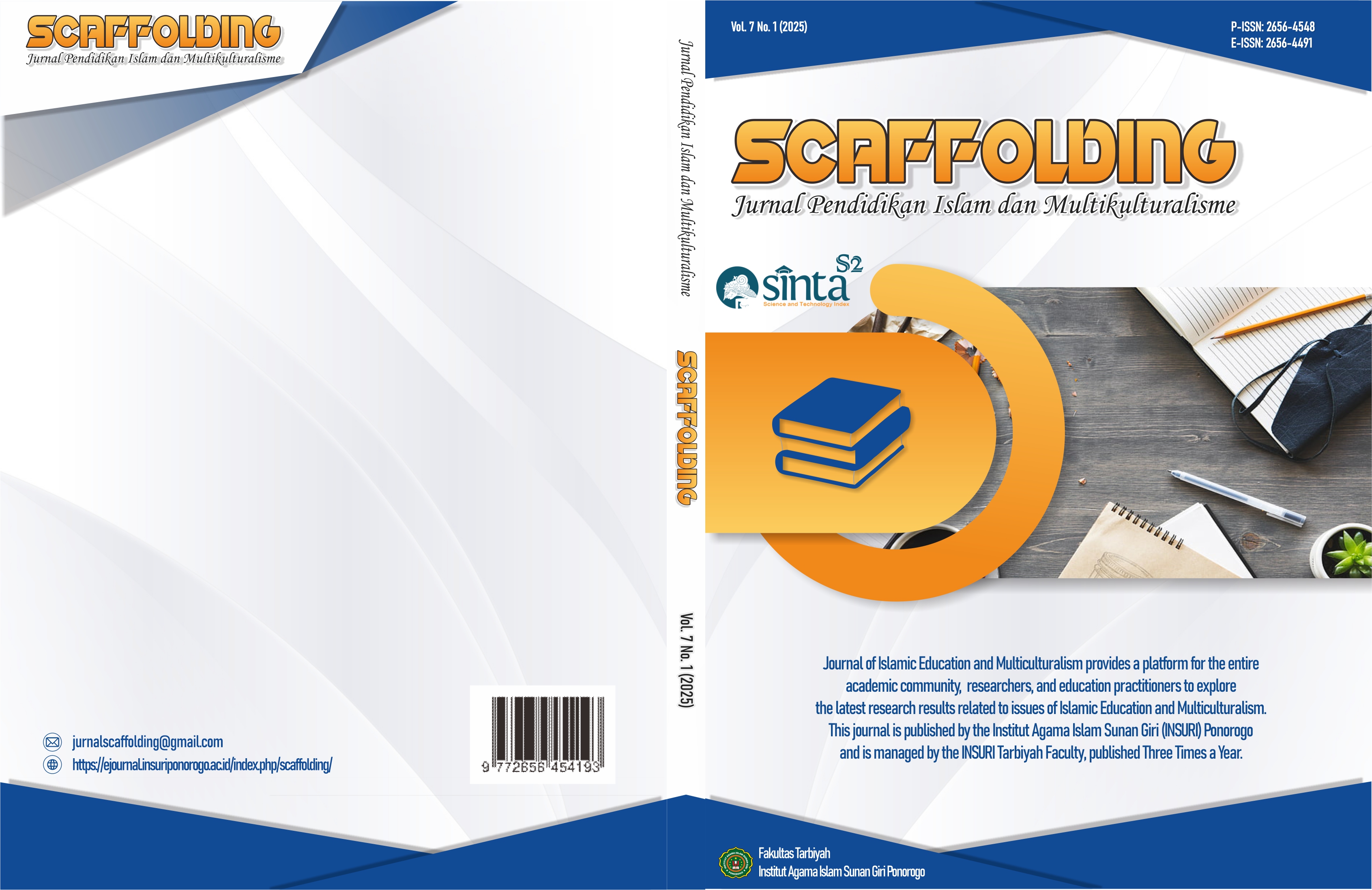Modernisation of Memorising the Qur'an: A Comparison of Traditional and Modern Methods
DOI:
https://doi.org/10.37680/scaffolding.v7i1.6727Keywords:
Modernisation, Memorising, Traditional, ModernAbstract
The purpose of this study is to analyse how the modernisation of Al-Qur'an memorisation methods affects both the comparison of traditional and modern methods on students' learning motivation, memorisation effectiveness, and long-term memory resilience at MTs Swasta Jabal Lubuk Raya. This research method is descriptive qualitative, or often known as postpositivistic, artistic, and interpretative research. Data collection instruments were observation, in-depth interviews, and document review. Data analysis using the flow of activities as proposed by Miles and Huberman, namely data reduction, data display and conclusions, drawing, and verification. The technique of sharpening the validity of data in this study is to use triangulation techniques. The results of this study are the modernisation of memorising the Qur'an with modern methods is significant to student learning motivation, especially in Gamification of learning to increase engagement and ease of access to increase the spirit of learning and improve the speed of memorisation to be higher and the existence of variations in memorisation methods according to student learning styles. While memorising the Qur'an with traditional methods has a significant effect on the effectiveness of student memorisation, especially in the quality of tajweed that is more guaranteed, and the memorisation process is more methodical, as well as a deeper understanding of the context of the verse. So it can be concluded that traditional Qur'anic memorisation methods and modern methods each have advantages and limitations. Therefore, the integration of both methods, i.e., combining the strengths of traditional methods and the convenience of modern technology, can produce more optimal results. This combination allows students to get direct correction from the teacher while utilising the convenience of self-learning with technology, thus increasing memorisation effectiveness and long-term memory retention. It also provides time flexibility for students without compromising the quality of teaching and learning.
Downloads
Published
How to Cite
Issue
Section
License
Copyright (c) 2025 Neliwati Neliwati, Rubiyah Batubara, Muhammad Darwis, Desriadi Desriadi

This work is licensed under a Creative Commons Attribution-NonCommercial 4.0 International License.
Authors who publish with this journal agree to the following terms:
Authors retain copyright and grant the journal right of first publication with the work simultaneously licensed under a Creative Commons Attribution-NonCommercial 4.0 International License that allows others to share the work with an acknowledgement of the work's authorship and initial publication in this journal.
Authors are able to enter into separate, additional contractual arrangements for the non-exclusive distribution of the journal's published version of the work (e.g., post it to an institutional repository or publish it in a book), with an acknowledgement of its initial publication in this journal.
Authors are permitted and encouraged to post their work online (e.g., in institutional repositories or on their website) prior to and during the submission process, as it can lead to productive exchanges, as well as earlier and greater citation of published work.



